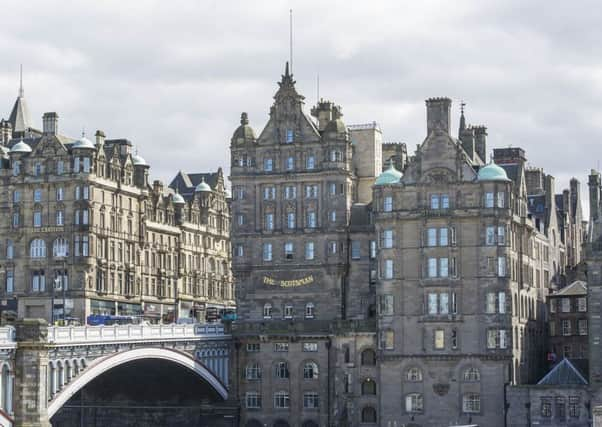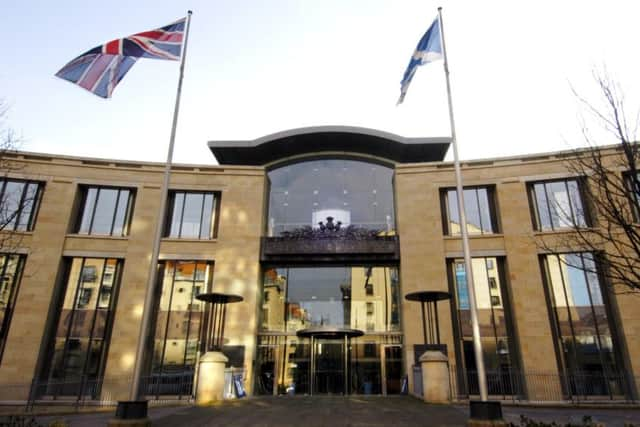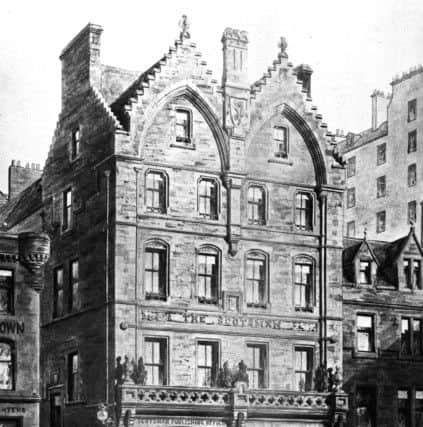Scotsman 200: From the High Street to Orchard Brae, via North Bridge


The first edition of The Scotsman was produced on 25 January, 1817, at 347 High Street, Edinburgh, opposite St Giles’ Cathedral. Its location was no coincidence. The High Street already held associations with printing and publishing and had long been at the centre of literary activity.
The Scotsman’s connections to the area remained intact throughout two further moves, first across the road to 166 High Street where the paper took up rooms formerly occupied by the Property Tax Office and again in 1826 when the Edinburgh Almanac records a move to 257 High Street.
Advertisement
Hide AdAdvertisement
Hide AdWith the conveniences of Edinburgh journalism gathered around its doors, there was hardly a better place to station a publication that aspired to rival its older peers.


Of the eight newspapers published in 1817, all had their headquarters in the High Street or its immediate precincts.
Indeed, the north side of the street, between the Tron Church and the Mercat Cross, was regarded as the birthplace of the Edinburgh Press. These premises remained home to The Scotsman until 1862, when it expanded into offices in Cockburn Street, which at the time was a fairly recent addition to the city landscape having been constructed in 1859.
The paper’s gain in prestige and profit made expansion necessary and the tailor-made, five-storey office was well suited for a process of newspaper production that barely changed until the introduction of computers.
The building on Cockburn Street, designed by Messrs Peddie & Kinnear, was one of the largest and finest newspaper offices in the country and allowed adequate floor space to house the presses. A flight of carrier pigeons was employed at Cockburn Street – and later at North Bridge – to send messages, such as football reports and scores, back to the office


At the time of the move away from the High Street, it was widely believed that the Cockburn Street offices would be sufficient to accommodate generations to come, but as Scotland’s national newspaper continued to grow, and with the establishment of the Edinburgh Evening Dispatch, it was decided that the organism had outgrown its shell.
The widening of North Bridge, and the reconstruction of North Bridge Street, gave the proprietors of The Scotsman the opportunity they had been waiting for.
Advertisement
Hide AdAdvertisement
Hide AdSuch was the space they required to house the staff of The Scotsman and its stablemates that in 1898, at a cost of £120,000, they bought the whole western side of the street, from the High Street to Waverley Station.
The iconic office on North Bridge was purpose built for The Scotsman and allowed for an outlook across the city, over the railway lines running in and out of Waverley and up to Calton Hill. Equidistant from Princes Street and the High Street and close to the Post Office, council chambers, law courts, university and stock exchange, there was hardly a better site.


Its proximity to the railway allowed for the delivery of paper, coal and other materials in a private siding.
The six-and-a-half-year period between the purchase of the site and the occupation of the building allowed ample time for careful planning, down to the finest detail and placement of equipment.
With its grand entrance, Renaissance-inspired architecture and gold lettering – which still glints when the sun catches it on the side of the building today – North Bridge was certainly an impressive building, into which the staff moved in December 1904.
The premises allowed for the installation of wires, which connected The Scotsman to London and the Imperial Parliament.


The machinery hall, characterised by heat and the smell of oil fumes and printing ink, housed the sizeable printing presses and linotype machines “of the very latest type”.
Advertisement
Hide AdAdvertisement
Hide AdThe interior of North Bridge was described by former Scotsman columnist Albert Morris in his book ‘Scotland’s Paper: The Scotsman 1817-1992’ as “a curious mixture of Cretan labyrinth and the engineering innards of a large liner”.
From its windows, the views alternated between the hustle and bustle of news vendors on Fleshmarket Close and the panorama across north Edinburgh, the Forth and beyond.
The advertising office was accessed directly through the main entrance on North Bridge and comprised Pavonazzo and Verde Antico marble columns, carved mahogany panelling, illuminated windows and richly ornamented ceilings.
Every effort was made to cater to the eye of the public, who would visit the front office to place adverts, and who were invited into The Scotsman’s offices for weekly “visitors’ nights” when groups of up to 30 could witness the printing operations.
On entering the reception area, visitors would be met by friendly and helpful assistants, which Mr Morris describes in his book as being like “duchesses in disguise”.
Home can often be the heart of a newspaper and with North Bridge, that was certainly the case.
Among The Scotsman’s current staff, some still have fond memories of the North Bridge building’s winding staircases, nooks and crannies and architectural charm.
Advertisement
Hide AdAdvertisement
Hide AdProduction staff remember the case room as a treasure trove of the history of newspaper production. Piles of old papers, original telegraph machines and all manner of publishing paraphernalia filled the room.
The final step on The Scotsman’s journey from pen to the public was to travel in the service lift to the basement, where bundles of papers would be loaded into waiting vans on Market Street and sent on their way. No time was lost in delivering the news.
The offices at North Bridge became the life and soul of the newspaper and remained so until The Scotsman’s move to another purpose-built home, Barclay House at Holyrood.
Designed to house three newspapers – The Scotsman, Edinburgh Evening News and Scotland on Sunday – in one large, open-plan building, the Holyrood office lacked some of the grandeur of North Bridge but was better suited to the new, streamlined methods of publishing.
The paper’s thistle masthead was recreated in brass by blacksmiths at P Johnson & Company in Ratho and set above the entrance to Barclay House.
It was opened by Her Majesty the Queen and the Duke of Edinburgh on 30 November, 1999, and offered a more modern working environment.
The presses had moved to Newhaven Road some years previous and with the internet already up and running – albeit on computers several times the size of the slim screens we would recognise today – the basement of the Holyrood building housed a dedicated IT department.
Advertisement
Hide AdAdvertisement
Hide AdFrom their new home by the foot of the Royal Mile, journalists could watch as the construction of the Scottish Parliament building progressed in the run up to its opening in October 2004.
When The Scotsman left Barclay House in June 2014 after 15 years of calling Holyrood home, it was to be a move which would bring the newspaper, in some respects, full circle. Looking out across Edinburgh from the top floors of Orchard Brae House on Queensferry Road, its staff once more have a bird’s eye view of all that is going on down below.
Five former editors – John Ritchie, John Ritchie Findlay, John Russell, Alexander Russel and Charles Alfred Cooper – are buried or remembered at Dean Cemetery, directly opposite Orchard Brae House.
Two wooden plaques are displayed on the wall of The Scotsman reception at Orchard Brae, commemorating employees of the paper – from linotypists to compositors – who fell in both world wars.
For Scotland’s national newspaper, its high perch looking across the capital is a fitting home.